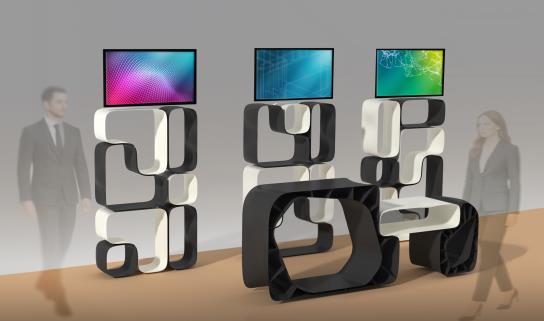The Fraunhofer Institute for Machine Tools and Forming Technology (IWU) will unveil the latest generation of its Wire Encapsulating Additive Manufacturing (WEAM) technology at Formnext 2025 in Frankfurt, Germany. The new system enables the direct integration of electrical functions into components using standard wires and cables, eliminating the need for conductive pastes, inks, or powders.
By employing homogeneous alloy wires with a constant conductor cross-section, WEAM achieves superior electrical and mechanical performance for both sensing and load-bearing applications. According to Fraunhofer IWU, the electrical behavior of printed structures can be precisely tuned through the choice of alloy, wire diameter, and trace layout, while the printhead’s continuous rotation allows deposition onto complex geometries. This flexibility enables the direct incorporation of power and data lines, sensors, and electromagnetic shielding into existing parts or newly manufactured components.

Applications from aerospace to robotics
At Formnext, a series-ready WEAM printhead integrated into a system from manufacturer CR3D will be presented. Lukas Boxberger and his team will demonstrate four industrial applications that highlight the technology’s versatility.
One demonstrator, produced for automotive supplier Nissha, features a radome with an integrated heating element. Heating conductors were printed directly onto a foil that was later formed and shaped, preventing delamination during back-injection molding. The result is consistent de-icing performance for radar sensors under extreme conditions, while reducing material and energy consumption.

Another implementation showcases the production of flexible and stretchable circuit boards, created by printing copper traces onto 0.1 mm-thick thermoplastic polyurethane (TPU) film. The resulting circuits are lightweight, durable, and can be seamlessly integrated into wearables, vehicle interiors, or building materials.

In a further advance, Fraunhofer IWU has produced PFAS-free flexible conductors capable of continuous operation at 260°C and short-term exposure up to 300°C. Since the conductors are bonded with the same polymer as the substrate, fluorinated coatings are unnecessary, improving recyclability, mechanical stability, and environmental compatibility.

A final demonstrator, a drone housing with embedded coils and sensors, illustrates how an entire structural component can function as its own circuit board. This “housing-as-PCB” approach enables compact, lightweight designs that integrate sensing, actuation, and shielding directly into the structure.

Fraunhofer IWU positions WEAM as a step toward sustainable, multifunctional manufacturing, where electrical functionality and mechanical integrity are created in a single additive process. The technology offers major benefits for the automotive, aerospace, defense, and robotics sectors, particularly where design freedom, reliability, and recyclability are critical.
Part of a wider trend toward functional, intelligent 3D-printed systems
Fraunhofer IWU’s WEAM technology adds to a growing body of research focused on embedding electronic functionality directly into 3D-printed structures. Earlier this year, studies explored how shape-conformal 3D-printed batteries could power compact devices without compromising form factor, while new dual-wavelength resins have enabled the fabrication of embedded circuitry with degradable supports. In parallel, advances in smart textiles and wearable sensing continue to demonstrate how additive manufacturing can merge electrical performance with structural design, a direction that WEAM now extends to industrial and structural applications.
While you’re here, why not subscribe to our YouTube channel? Featuring discussion, debriefs, video shorts, and webinar replays.
Want to help shape the future of AM? Join the 3DPI Expert Committee.
Featured image shows the Radome Heating, produced via the WEAM process. Image via Fraunhofer IWU.
